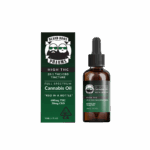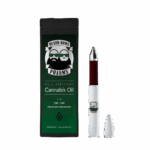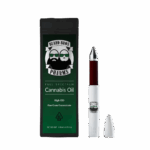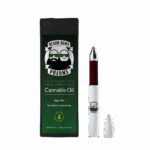The Minnesota Office of Cannabis Management (OCM) has opened a public comment period for draft rules that will govern the state’s emerging recreational cannabis industry. This marks a significant milestone for Minnesota’s cannabis market, though the rollout has been anything but smooth. From abrupt leadership changes to delays in licensing, the road to regulated cannabis sales has been long and complicated. Here’s what you need to know about the comment period, the rules being proposed, and what this means for the industry’s future.
The Significance of the Public Comment Period
On Monday, January 13, OCM announced its intent to adopt expedited rules for the recreational cannabis market and opened a 30-day public comment period. During this time, Minnesotans can voice their opinions and provide feedback on the draft regulations that are set to shape licensing, safety protocols, packaging, and more.
“Today marks another significant milestone in the work to launch a safe, equitable, and responsible cannabis marketplace in Minnesota,” said Charlene Briner, OCM Interim Director, in a press release outlining the new draft regulations.
The comment period will remain open until February 12, 2025, at 4:30 PM. Members of the public can submit feedback via the Office of Administrative Hearings website, an accessible portal designed to encourage participation from community members, advocates, and industry stakeholders.
How We Got Here
It has been nearly two years since Minnesota legalized recreational cannabis. The legislation brought optimism for economic growth and social equity but also ushered in challenges that have delayed the industry’s launch.
OCM initially shared its first draft of the proposed regulations in July 2023, inviting feedback through surveys and meetings with stakeholders. These efforts aimed to create an inclusive set of rules to reflect best practices from other states while addressing consumer safety and equitable market participation.
What the Minnesota Cannabis Draft Rules Cover
The proposed regulations cover every facet of the cannabis business lifecycle. Here are some key areas addressed:
Licensing
OCM is working to streamline the process of issuing licenses to various business types, including microbusinesses, wholesale operations, transporters, testing facilities, and delivery services. The agency plans to hold the lottery system for capped businesses in May or June 2025 and could start issuing uncapped licenses once it finalizes the rules.
Consumer Safety and Product Standards
Safety is a priority for regulators. The rules emphasize the need for transparent packaging, clear labeling, and robust product testing to ensure quality and safety for Minnesotans. For example, edibles and other consumables will need to meet strict dose limits and ingredient disclosure standards.
Social Equity
OCM aims to prioritize equity in the cannabis industry by supporting small businesses, particularly those from historically marginalized communities. Special licensing and funding initiatives may be introduced to lower entry barriers for potential operators.
Security Measures
Cannabis businesses must adhere to security protocols, including surveillance, record-keeping, and restricted access to facilities. These measures aim to protect both businesses and the public as the market develops.
A Rocky Road to Regulation
Minnesota’s cannabis rollout has been marred by delays and growing pains. With initial projections targeting a fully operational market by 2024, missteps have pushed the timeline further. The latest estimates suggest that the first legal recreational sales beyond tribal lands might not occur until late 2025.
Despite the setbacks, stakeholders remain optimistic. Lawyer Carol Moss, a member of Gov. Walz’s Cannabis Advisory Council, believes that microbusinesses could see licenses within months following the adoption of these draft regulations. This incremental rollout, though slow, could pave the way for a more stable and sustainable industry in the long term.
Public participation is at the heart of this rulemaking process. OCM encourages Minnesotans to submit detailed comments identifying specific rule sections and proposing adjustments. Feedback will play a critical role in refining the regulations before they undergo judicial review, gubernatorial approval, and final adoption.
The public comment period is crucial for ensuring that the rules meet the needs of all stakeholders, from entrepreneurs to consumers. After this phase, a state judge will confirm the rules, followed by a 14-day review period by Governor Tim Walz. OCM anticipates publishing the final adoption by the end of the first quarter of 2025.
What’s Next for Minnesota’s Cannabis Market?
If everything goes according to plan, qualified applicants for uncapped license types, such as microbusinesses, wholesalers, and transporters, could hopefully begin operations before summer 2025. While larger businesses may still face delays due to separate legal challenges, the smaller operators represent a vital first step toward launching Minnesota’s regulated cannabis market.
The rollout remains a work in progress, but this comment period provides an invaluable opportunity to move the needle forward. The involvement of advocates, industry insiders, and everyday consumers will help build the foundation for a fair, safe, and thriving market.
















